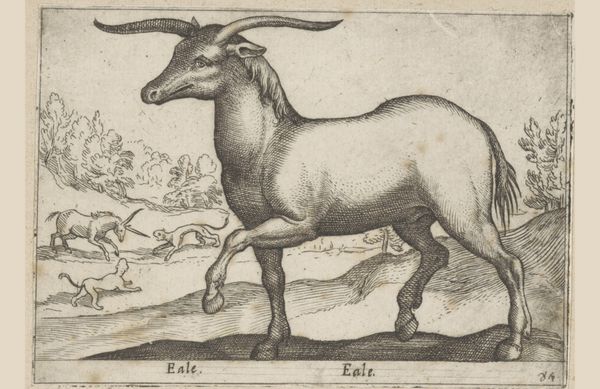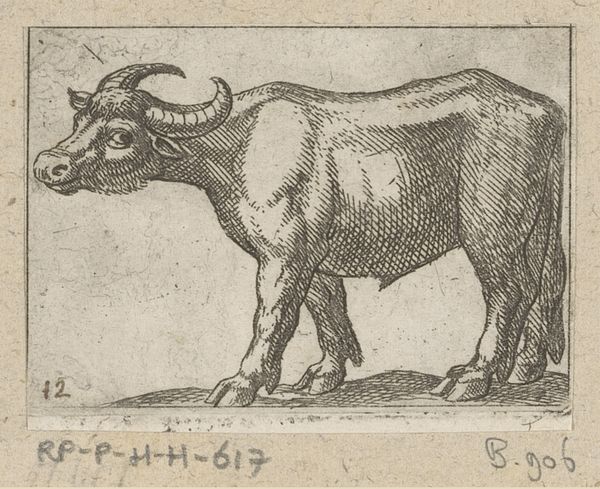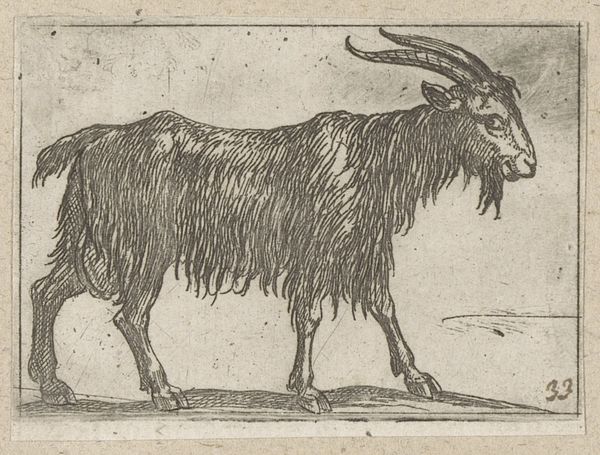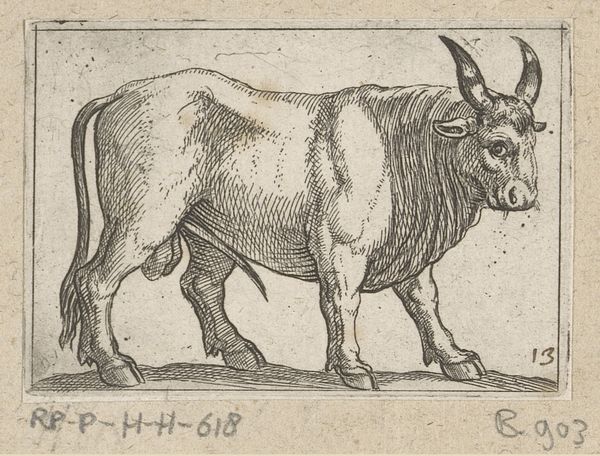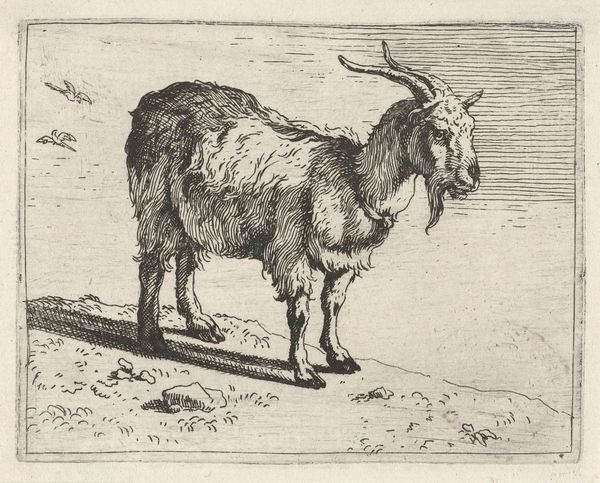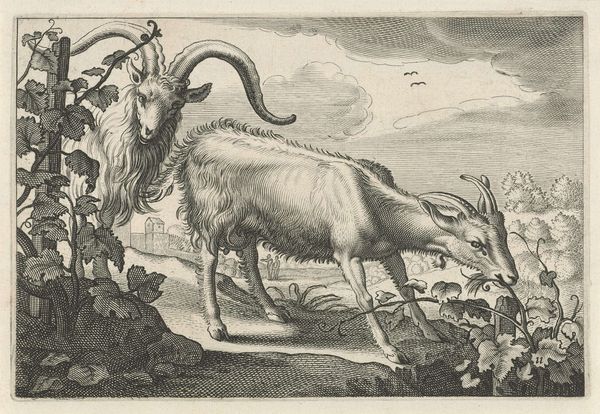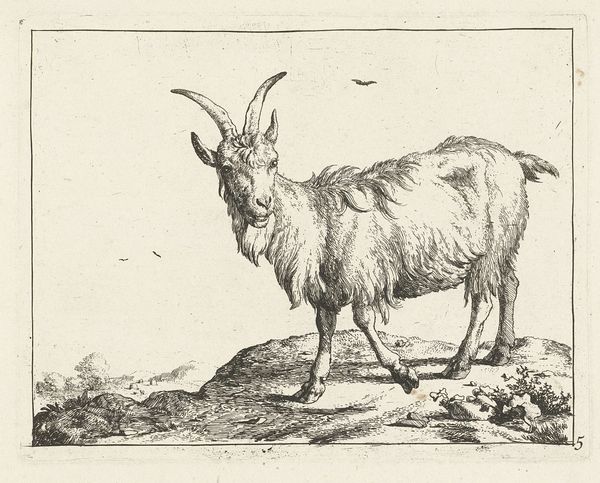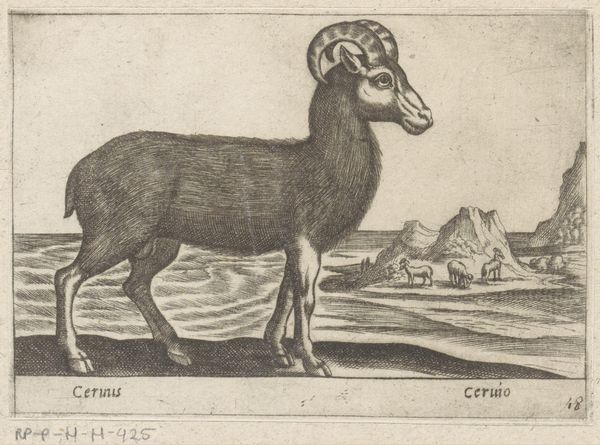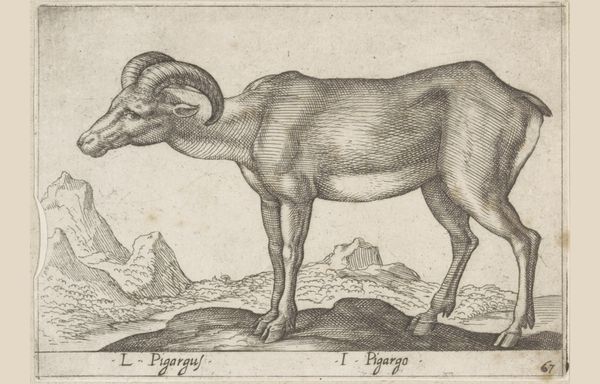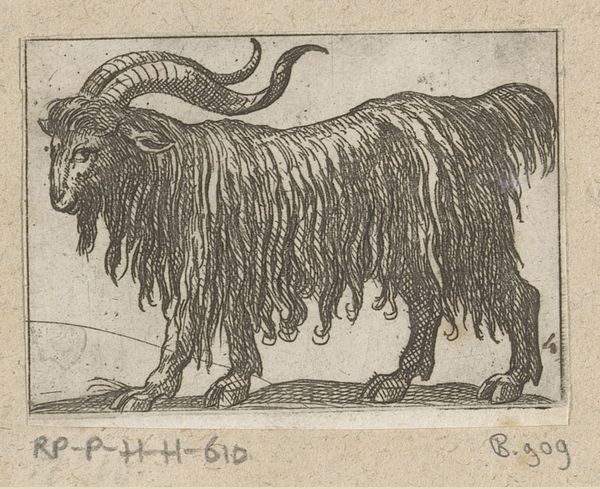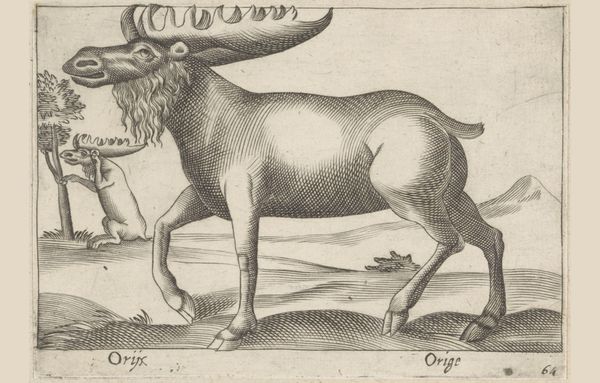
print, etching
#
baroque
#
animal
# print
#
etching
#
landscape
Dimensions: height 95 mm, width 137 mm
Copyright: Rijks Museum: Open Domain
Antonio Tempesta created this print of a fantastical goat, known as a Capra, sometime between 1555 and 1630. It's made using a process called etching, where lines are bitten into a metal plate with acid, then filled with ink and printed onto paper. Notice how the etched lines define the animal’s form, creating shadow and texture? The process allowed Tempesta to achieve incredibly fine detail, especially in the rendering of the fur. But etching wasn't just about aesthetics; it was also a key technology for disseminating images widely. Prints like these could be produced in multiples, making art more accessible and fueling the growth of visual culture. The amount of labor involved in the production process is also noteworthy. Each plate required meticulous work and skill, and the image had to be printed to paper, often by workshop assistants. So, next time you look at a print, consider the materials, the labor, and the social context that made it possible. It’s a reminder that even seemingly simple images can be powerful documents of their time.
Comments
No comments
Be the first to comment and join the conversation on the ultimate creative platform.
